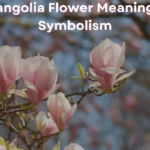The only other flowering vine with a wider distribution than clematis is Morning Glory. In addition, it grows surprisingly quickly under the correct temperature conditions.
Clematis Flowers: Decode Their Symbolism, Meaning, and Vibrant Colors

Clematis is a tremendous symbol of beauty and joy, and because of its many meanings, it may be a wonderful method to express yourself using conventional floral language. To determine if it is appropriate for your landscape ideas, learn what it implies and how to grow it.
Clematis Flower Meaning – What are the essentials?
The flower clematis symbolizes intelligence, mental prowess, and delight for travelers in the language of flowers. However, the Victorians also saw the clematis bloom as a representation of poverty, whereas the Japanese saw it as a symbol of moral beauty. The Clematis is frequently referred to as the “Queen of the Vines” with fondness.
Species, Family, and Taxonomy
The genus Clematis contains almost 300 different flowering species, many of which are regarded as vining plants. They are a member of the renowned Ranunculaceae family, which also includes several Buttercups and other lovely wildflowers.
Fragrances, colors, and characteristics of Clematis
The majority of clematis varieties are vines that, during the warmer months of the year, climb up and over objects. Some forms, on the other hand, are bushes or smaller reclining wildflowers. Some trees are evergreen, however, the majority shed their leaves over the winter.
The strong fragrance and aroma of clematis blooms, which to many have undertones of almond, are highly regarded.
Origin and History of Clematis Flowers
The first species of clematis to reach the rest of the world were Japanese variations, which did not reach Europe until 1836. The original species that was brought to Britain continues to be the type that is most frequently used in the development of large flowering cultivars. By then, it had been grown in Japan for many years.
Types, Species, and Cultivars That Are Popular
In addition to the over 300 species that are referred to as clematis, there are hundreds of cultivars that are frequently produced from only a small number of the species. Some of the most well-liked clematis cultivars have larger-than-normal, colorful, or striped blooms. The ‘Viticella’ and ‘Evergreen’ categories of cultivated clematis include some of the most extensively planted varieties.
Where can you find Clematis flowers?
North America’s native clematis species include the unusual Devil’s Darning Needle. Others are indigenous to Asia’s temperate regions, such as Japan and much of China. Although some evergreen cultivars originated from cooler regions of North Africa, evergreen forms often originate in Europe.
What is its etymological meaning?
The popular term for these blooms in Latin is clematis. The most distinguishing characteristic of the majority of plants with this name is a climbing vine, from whence the name is derived.
Which is the apt season for Clematis flowers to bloom?
For the Clematis flower, there are two separate blooming times. Some of them are spring-flowering kinds, and they only begin to bloom on older plants from past years. While it’s still too chilly for other flowers to blossom, they can begin to bloom. The blooming season for summer-flowering plants ranges from June to October, however, they only produce blooms on new growth during that time.
Benefits and uses of Clematis flowers
Some North American native species were also utilized in place of peppers, but that is now viewed as a risky use of clematis. Planting species carefully around curious dogs and children is advised because the majority of species can be unpleasant if eaten or handled.
The majority of varietals are highly alluring to pollinators like different kinds of bees, butterflies, and moths.
Symbolism of Clematis Flower
Safe Travel
A common way to wish travelers luck on their travels is to give them clematis flowers. Because they are skilled climbers, they can squirm and maneuver their way out of any bind.
They constantly follow the sun as they climb by using plants, buildings, and other objects as their ladders.
Clematis, which are never content to stay in one spot, make the ideal flower to offer to travelers and wanderers. It is not surprising that some dubbed it “Traveller’s Joy.”
Social Mobility/Ambition
The clematis blossom has come to represent ambition and social mobility because it is not happy to stay at the bottom of the flower bed with the other groundlings.
They are a wonderful flower to send to friends and relatives who have recently received a promotion at work or who are unhappy with their current circumstances because they want to reach for the sky and realize their potential. This idea is implied by the moniker “Climbing Queen.”
Mental Peace
The blooms have come to represent mental flexibility and superior intellect because they can grow tendrils and wrap themselves around other objects and plants in order to climb.
They are intelligent flowers that are flexible and resilient, and they frequently captivate those who can identify with these qualities in themselves. Some may award it to those who are beginning their academic careers or to those who have excelled in their academic fields. They make wonderful graduation bouquets.
Wisdom
The clematis plant has the moniker “Old Man’s Beard” because when its tendrils drop down from a height, they resemble the strands and tufts of a lengthy beard. People began to identify the plant with profound wisdom and experience as a result of the wizard-like associations, particularly with white clematis.
This meaning was further heightened by the fact that it grew gradually and steadily over a long period of time. It gets more gorgeous and striking as it ages, unlike many lovely flowers that blossom and then wither.
The Devil
There are certain links between the devil and clematis blooms. Some even referred to it as the “devil’s darning needle.” Their pointed, needle-like buds may be the source of the reference. Or, to the way the tendrils grow to weave themselves around other plants and objects.
In fact, they resemble snakes somewhat in the manner that they wind and curl around objects. The connotations with the devil might have been influenced by this. Despite all of this, they are actually pretty manageable and don’t strangle plants.
Flower color Meanings
Blue clematis
Blue clematis comes in a variety of hues, from powdered light blue to deep indigo blue. These flowers link to the 5th Chakra, which governs your throat and chest and are associated with calmness, judgment, and intellect.
Light and turquoise blue Your capacity for communication and your interactions with people are particularly relevant to clematis.
White Clematis
These blossoms signify wisdom and maturity, just as white clematis is often called “Old Man’s Beard” by gardeners. They are linked to mental chastity and purity as well. These flowers have a connection to your seventh chakra, which governs your superconsciousness.
Thus, white clematis symbolizes profound self-awareness, intellectual enlightenment, and spiritual kinship with the divine.
Purple Clematis
Higher social status is associated with purple clematis. Since it enjoys climbing, it makes sense that the meanings of the color purple, which has long been associated with monarchy and prosperity, would coincide. Like white clematis, purple clematis has a connection to the seventh chakra.
Purple Clematis, on the other hand, is indicative of philosophical divinity rather than spiritual divinity because purple is a blend of intoxicating blue and earthly red.
The blossoms of clematis are found all over the world and come in a variety of vivid and eye-catching hues. They are a favorite among contemporary gardeners because of the height they add and the insects and pollinators they draw.
Join 25,000+ smart readers—don’t miss out!








